- The ninth edition of the 4K-HDR Summit has gathered in Malaga the world leaders in digital technology and audiovisual content, and according to experts, it will consolidate that after High Definition (HD), Ultra High Definition (UHD) will be the future standard of the “top” television.
- The heads of the International Olympic Committee’s (IOC) audiovisual production company (OBS) emphasise that “we have to analyse the consumption figures of the Olympic Games through social networks and especially aimed at young people. We are starting to include vertical formats in our offer”.
- Ursula Romero, Executive Producer at International Sports Broadcasting (ISB), reflects: “We are constantly questioning whether we should broadcast in 4K and HDR. It’s a perpetual question mark because there is a big gap between producers and consumers.
Malaga, 16th November
The Paris 2024 Olympic Games will test new innovative models in social networks and youth consumption, and on the other hand will consolidate 4K-HDR as the television and audiovisual standard for many years to come, according to the experts who took part these days in Malaga to analyse the future of Ultra High Definition (UHD) television, which in Spain will arrive regularly in less than 100 days for 99% of the population.
The ninth edition of the 4K HDR Summit 2023, the world’s leading event on Ultra High Definition, which since 2015 has brought together leading Tech and content producers in Andalusia, has put the focus during its four days on one of the most important television events to be held next year: the Paris 2024 Olympic Games.
Paris 2024, the first Olympics to be produced entirely in 4K
The head of engineering at the International Olympic Committee’s (IOC) production company OBS, Isidoro Moreno, highlighted “the evolution in the way in which television broadcasters have tried to provide coverage”, with a much greater demand for services than in the past.
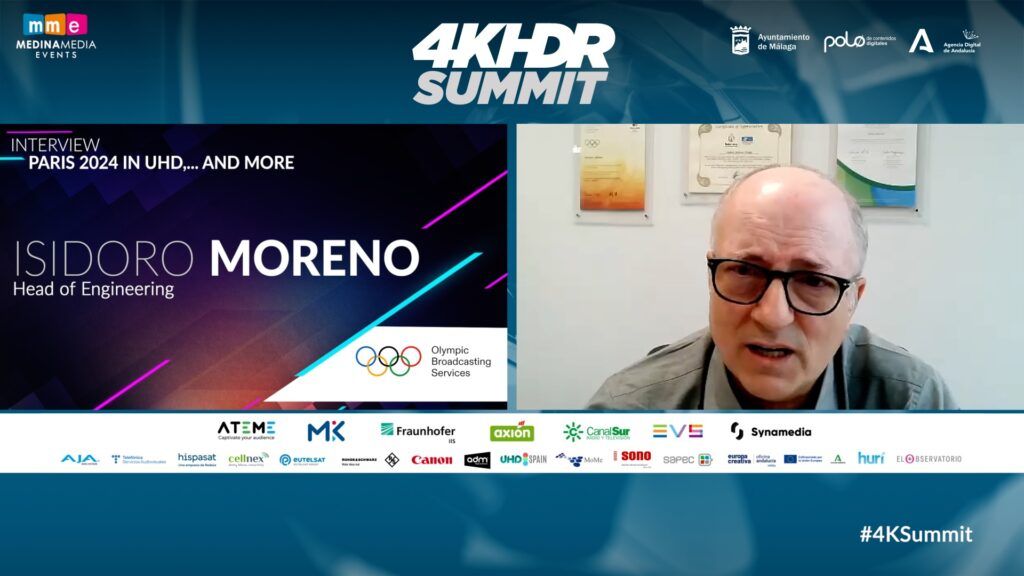
Isidoro Moreno, Head of Engineering of the production company OBS (Olympic Broadcasting Services), and Guillermo Jiménez, Broadcast Engineering Director of OBS, took part in the third day of the 4KHDR Summit to explain the challenges and details of the innovative television deployment that Paris 2024 will entail, with a 100% 4K-HDR production.
Similarly, OBS confirmed that it will use super-fast 5G wireless connectivity for live coverage. 5G-connected cameras will be deployed for coverage of sports such as sailing, which will help bring viewers into the action on board from the athlete’s point of view (POV).
Guillermo Jiménez wanted to focus on another aspect that is increasingly present, and that in events that bring together such a large number of spectators, it is essential to take into account: Social networks.
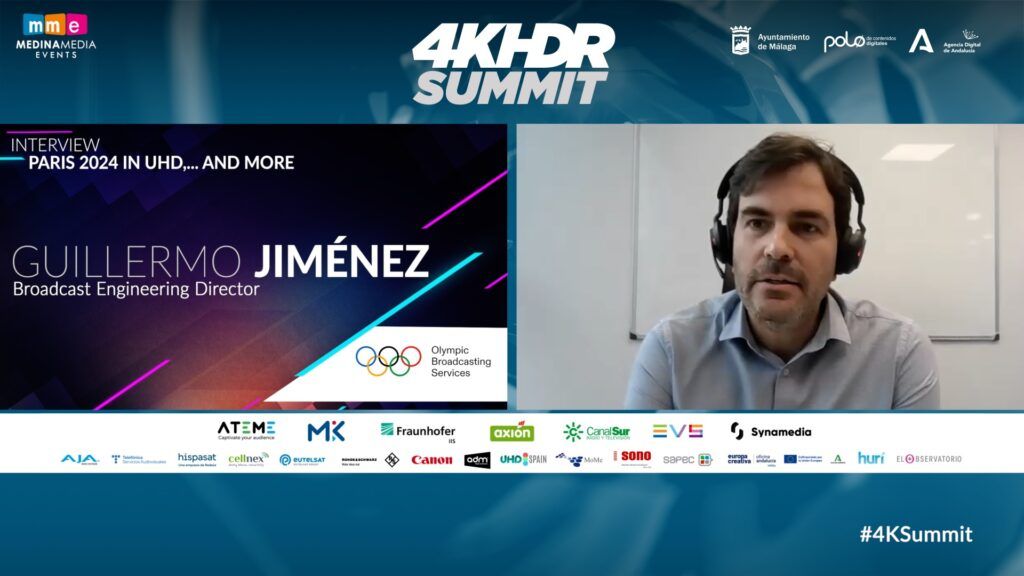
“We have to analyse the consumption figures of the Olympic Games through social media. We are also starting to include vertical formats in our offer, and all of this is distributed through our cloud platform, which can be accessed by broadcasters all over the world,” said Guillemo Jiménez.
For her part, Ursula Romero, Executive Producer of International Sports Broadcasting (ISB), reiterated that “young people are more interested in devices other than television. Everything revolves around social networks and they are now looking to watch sports by the minute and by the second, even in vertical format”.
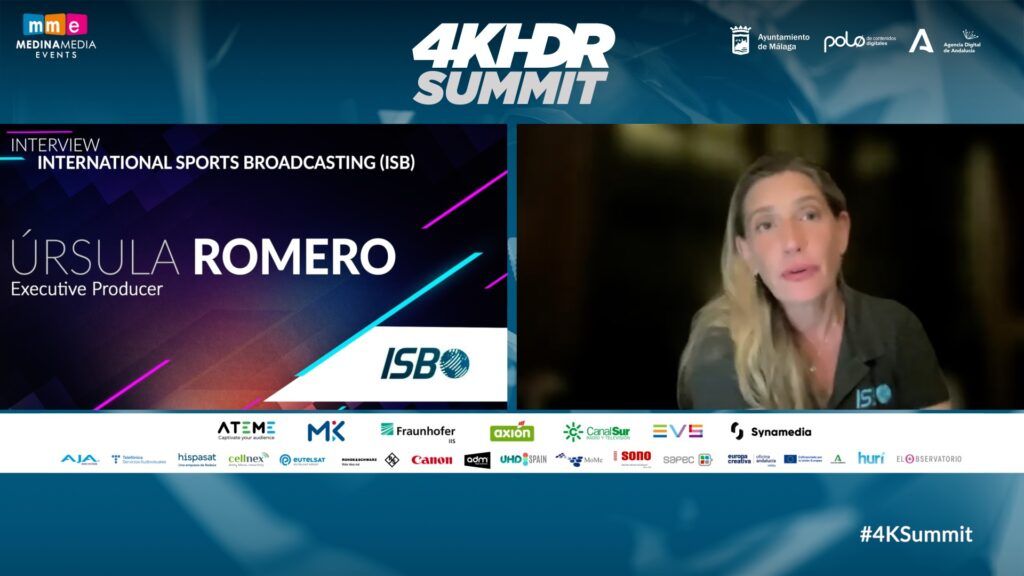
This is why, as Romero points out, “we are constantly questioning whether we should broadcast in 4K and HDR. It is a perpetual question mark because there is a big gap between producers and consumers.
Also on sport, and especially football, Cristiano Benzi, Vice President of Eutelsat, pointed out that “Sport is once again one of the most important content in 4K broadcasting“. The 4K satellite situation seems to be “quite stabilised”, said Eutelsat’s SVP Global-Professional Video.
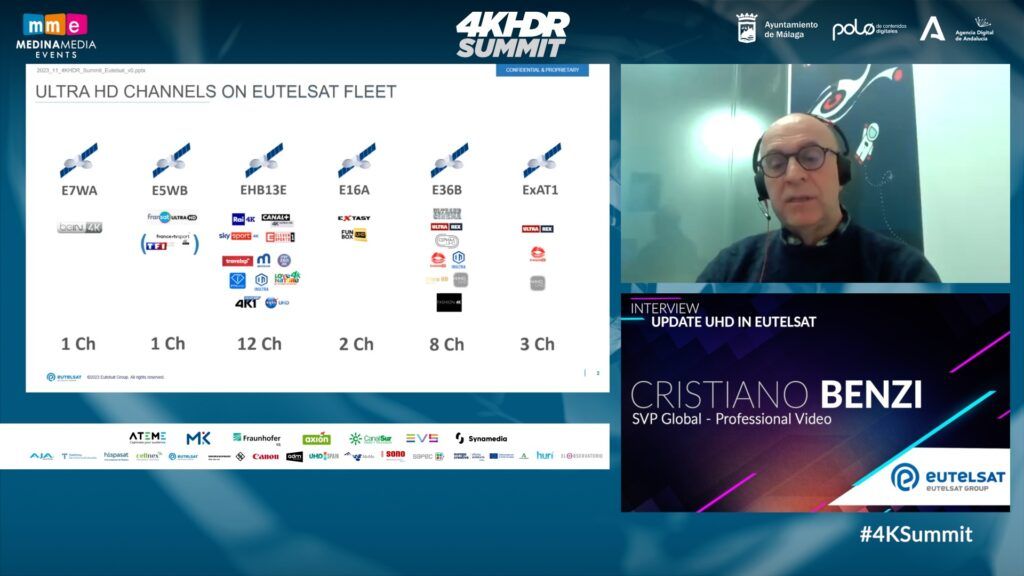
According to Cristiano Benzi, the way in which the user consumes the product seems to be a common denominator for all specialists. “Today, the way in which consumers use and consume video has become more and more different screens. Users are increasingly watching video on other devices,” concluded Benzi.
The importance of satellite in Ultra High Definition
Jorge Rodríguez, Head of Product Management and Presales at Hispasat, has looked to the future of Ultra High Definition (UHD) via satellite. “We are still in the process of migrating from SD to HD. The market is quite stabilised, which we didn’t expect. The number of UHD channels is the same, and even a bit lower from 2020 to 2023.
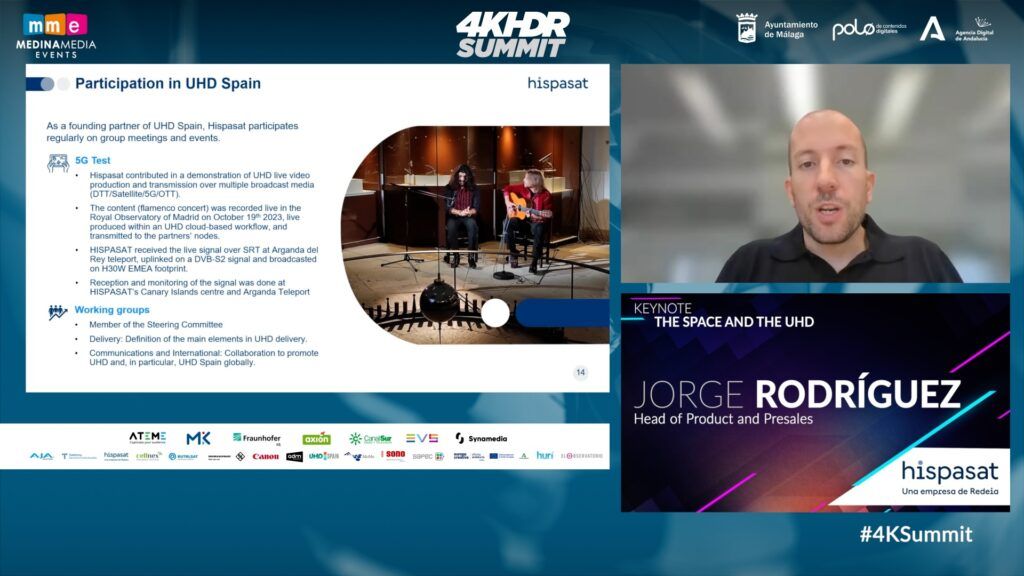
However, UHD remains one of the most important determining factors for consumers. “Streaming video quality remains one of the top three most valued user features. Our satellites broadcast more than a thousand TV channels in different regions and we have been able to reach more than two million users of our DTH platform”.
Xavier Redón, Product Manager at Cellnex, the first independent multinational communications tower company in Europe, has presented the roadmap for broadcasting until 2040.
According to Xavier Redón, at Cellnex “we are thinking about having more reach. The current missions of broadcasters are to reach TV sets at home, which he believes will be a key year in broadcasting. I think it is one of the years that will be marked as a milestone in the evolution of DTT, because if we look at what is happening now on air, we have 13 SD channels, 9 channels broadcasting in SD and HD at the same time, and 3 HD channels,” Redón reveals.
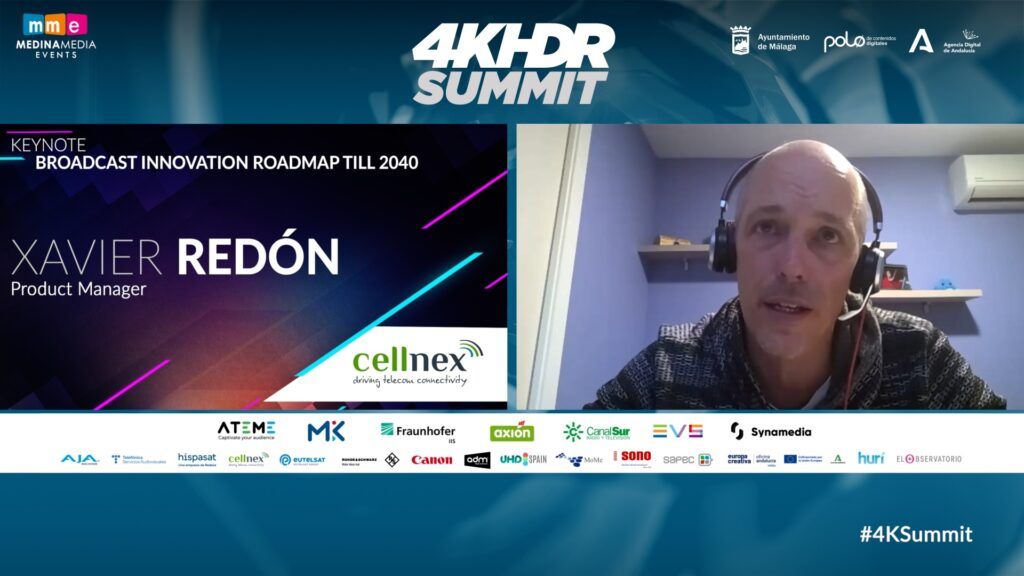
Meanwhile, from Brazil, engineer Carlos Cosme, Researcher at Globo TV’s Innovation Lab, has given an update on something he presented at the eighth edition of the 4K HDR Summit: Brasil TV 3.0. This model was used in the South American country during the World Cup in Qatar, as well as during Carnival. “The idea was to use the signal that Globo produced during the event and use this TV 3.0 technology and experiment with it, going beyond immersive audio.”
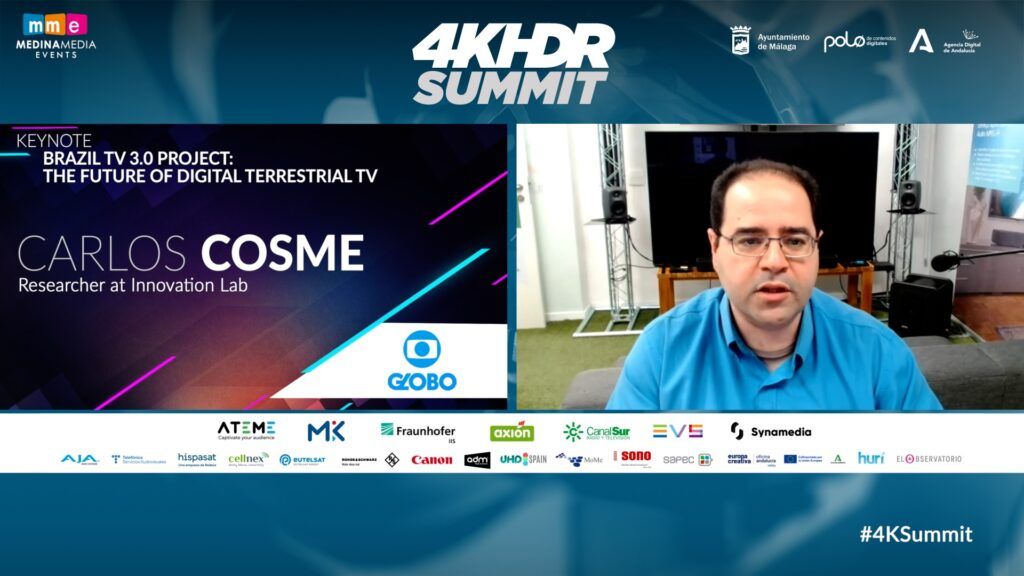
Aron Randhawa, Senior Product Marketing Specialist at Japanese multinational Canon, presented the Flex Zoom, “the ideal choice for today’s virtual production solutions in both film and television”.
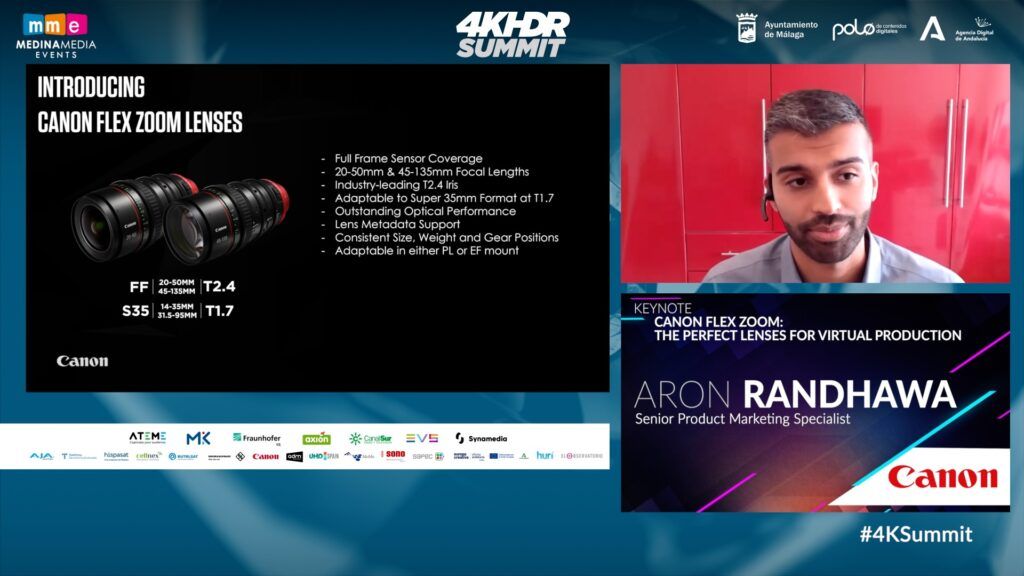
The conferences of the 4K HDR Summit 2023, although not live, can be followed 24/7 365 days a year by logging into Medina Media Events’ ‘The Observatory‘. On this platform, attendees can also schedule video meetings with other participants and speakers, as well as visit exclusive online demos. The finishing touch to this ninth edition will be the fourth and final day, which will be held today, christened “The Presidents’ Day”, with the participation of the top executives of the world’s UHD associations and the leading 4K, 8K and HDR production companies.
The ninth edition of the 4K HDR Summit is supported by the Malaga City Council through the National Digital Content Hub, and by the Digital Agency of Andalusia, ATEME, Canal Sur Radio and Television, Axion, Fraunhofer IIS, Mediakind, Synamedia, EVS, Telefónica Servicios Audiovisuales, Grupo ADM, AJA, Hispasat, Cellnex, Eutelsat, Rohde & Schwarz, Canon, Sapec, SONO, Hurí, UHD Spain and Europa Creativa Media Desk Andalucía. Schwarz, Canon, Sapec, SONO, Hurí, UHD Spain and Europa Creativa Media Desk Andalucía.